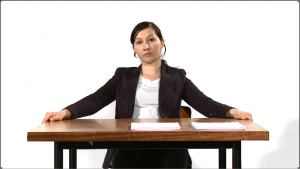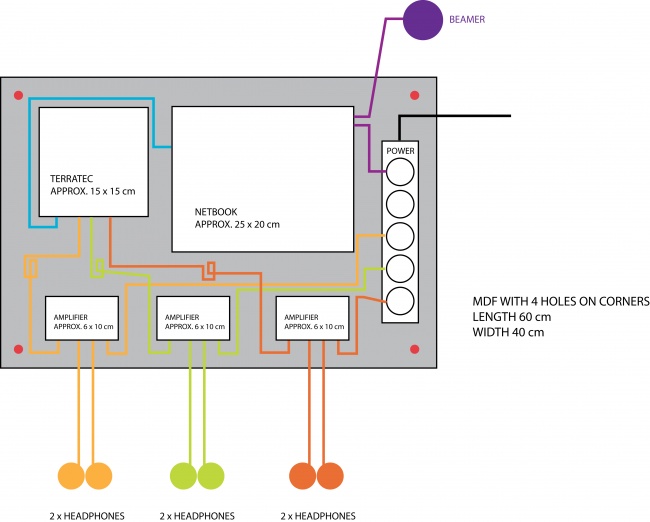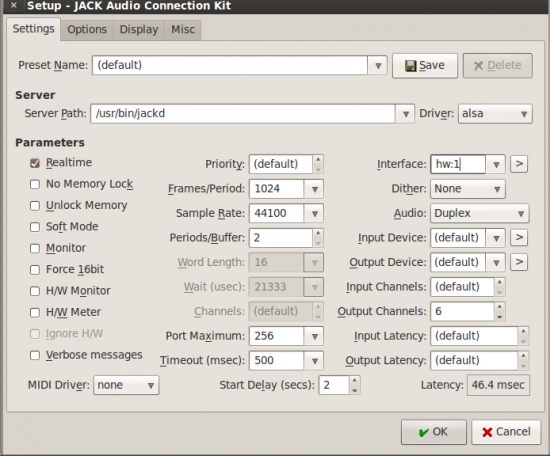User:Natasa Siencnik/project3: Difference between revisions
No edit summary |
|||
| (122 intermediate revisions by the same user not shown) | |||
| Line 1: | Line 1: | ||
= | =The Man in the Glass Box (1961–2011)= | ||
ABOUT THE BANALITY OF EVIL | A TRIAL ABOUT THE BANALITY OF EVIL<br /> | ||
<br /> | <br /> | ||
<br /> | <br /> | ||
[[File:eichmann-trial-image.jpg | | [[File:eichmann-trial-image.jpg | 500px]]<br /> | ||
<span style="font-size:8.5pt"> | |||
Court room with Eichmann in the glass booth, 1961 | |||
</span> | |||
<br /> | |||
<br /> | |||
===CONCEPT=== | |||
50 years after the Eichmann trial in Israel took place, the full compendium of more than 400 hours of film footage documenting the trial were released earlier this year on Youtube. In 1961, former SS officer and highest figure in the Nazi hierarchy responsible for facilitating the extermination of European Jewry, was charged and tried with committing crimes against the Jewish people and humanity. The case of multiple controversies was the first telecast of actual courtroom proceedings and was from the beginning conceptualized as a symbolic performance with a special stage design which placed the accused in a bullet-proof glass booth, a film director that made deliberate cinematographic decisions and an international audience that witnessed the trial from the living room. Originally shown as daily newsreels on international television, the trial was performed as a morality play, not surprisingly ending with the death sentence of the accused, which until today remains the only civil execution ever carried out in Israel. | |||
In the installation "The Man in the Glass Box (1961–2011)", the aesthetic and narrative strategies of the trial are made transparent. The proceedings are performed as an audio and video drama in three acts: the appeal, the testimony, and the verdict. From the ceiling 6 headphones are hanging, all sliced in half, of which each presents a disembodied voice of one persona in the proceedings: the accused, the judge, the prosecutor, the defender, a witness, and a political journalist. All voices contribute to the trial from their own perspective, however, only disclose a fraction of the story. | |||
The audio is expanded by a three channel video projection, which likewise disassembles the original film footage. As a result of the required simultaneous translations of the original proceedings from Hebrew (and partly German) into English, French and German, a large part of the footage is showing the silent protagonists of the trial, while a translator – mostly a female voice – is talking for all of them as a voice-over. The artist re-enacts the trial by recreating the silent film scenes of the footage all by herself and is lending her voice to the translator who presents all characters of the play. Thus she is re-narrating the story for the visitors, who can combine the stories, change perspectives and play an active role in the perception of the trial and politics of remembrance. | |||
<br /> | |||
=====ACTS===== | |||
The Appeal<br /> | |||
The Testimony<br /> | |||
The Verdict<br /> | |||
=====CHARACTERS===== | |||
The Accused (Eichmann)<br /> | |||
The Judge<br /> | |||
The Prosecutor<br /> | |||
The Defender<br /> | |||
A Witness<br /> | |||
A Political Journalist<br /> | |||
<br /> | <br /> | ||
===INSTALLATION=== | |||
<br /> | |||
[[File:DSC_3592b.jpg | 500px]]<br /><br /> | |||
[[File:DSC_3699b.jpg | 500px]]<br /><br /> | |||
<span style="font-size:8.5pt"> | <span style="font-size:8.5pt"> | ||
< | Installation set-up with beamer and headphones<br /> | ||
WALL (width): 3 m<br /> | |||
PROJECTION (width): 2 m<br /> | |||
HEADPHONES (width): 1.5 m<br /> | |||
</span> | |||
<br /> | |||
=====PART #1 : Audio===== | |||
<br /> | |||
EICHMANN (line out 3) | DEFENSE (line out 4) | JUDJE (line out 1) | PROSECUTION (line out 2) | WITTNESS (line out 5) | ARENDT (line out 6)<br /> | |||
<br /> | |||
=====PART #2 : Projection===== | |||
<br /> | |||
[[File:Screanshot_Video_Eichmann-20110625-1.png | 900px]] | |||
<br /> | |||
<br /> | |||
[[File:Screanshot_Video_Eichmann-20110625-2.png | 900px]] | |||
<br /> | |||
<br /> | |||
[[File:Screanshot_Video_Eichmann-20110625-5.png | 300px]] | |||
<br /> | |||
<br /> | |||
[[File:Screanshot_Video_Eichmann-20110625-6.png | 300px]] | |||
<br /> | |||
<br /> | |||
<br /> | |||
===TECHNICAL SET-UP=== | |||
[[File:exhibition-setup_natasa.jpg | 650px]] | |||
<br /> | |||
<br /> | |||
======SOUND====== | |||
OK | 1 x mac mini (same for video)<span style="font-size:6pt"> > BELONGS TO PZI</span><br /> | |||
OK | 1 x TerraTec Phase 26 (incl. USB cable)<span style="font-size:6pt"> > BELONGS TO AYMERIC</span><br /> | |||
OK | 2 x two RCA plugs to 3.5 mm stereo plug<span style="font-size:6pt"> > BELONGS TO PZI</span><br /> | |||
OK | 2 x 3.5 mm stereo plug to 6.35 mm stereo plug (1/4" TRS)<span style="font-size:6pt"> > BELONGS TO PZI</span><br /> | |||
OK | 2 x Behringer Microamp HA 400 Headphone Amplifier<span style="font-size:6pt"> > BELONG TO PZI</span><br /> | |||
OK | 3 x stereo headphones 3m cable and 6.35 mm stereo plug<span style="font-size:6pt"> > 1 BELONGS TO NATASA (incl. 1/4" TRS) , 1 TO DANNY (incl. 1/4" TRS), 1 TO PZI (incl. 1/4" TRS)</span><br /> | |||
OK | 1 x power distributor for 4 plugs<span style="font-size:6pt"> > BELONGS TO PZI</span><br /> | |||
OK | 1 x 150 cm iron rod with 8 holes<span style="font-size:6pt"> > BELONGS TO NATASA</span><br /> | |||
======IMAGE====== | |||
OK | 1 x mac mini (same for audio)<span style="font-size:6pt"> > BELONGS TO PZI</span><br /> | |||
OK | 1 x HD beamer Hitachi CPWX3011N 1280 x 800 px (16:10)<span style="font-size:6pt"> > BELONGS TO PZI</span><br /> | |||
MISSING | remote control for beamer<span style="font-size:6pt"> > BELONGS TO PZI</span><br /> | |||
OK | 1 x DVI cable for beamer<span style="font-size:6pt"> > BELONGS TO PZI</span><br /> | |||
OK | 1 x beamer mount<span style="font-size:6pt"> > RENTAL</span><br /> | |||
=== | ======GENERAL====== | ||
= | OK | mdf plate<br /> | ||
OK | steel wire<br /> | |||
OK | steel clips<br /> | |||
OK | hooks and anchors<br /> | |||
extension cable<br /> | |||
OK | power distributor<br /> | |||
OK | cable strap<br /> | |||
OK | gaffer tape<br /> | |||
<br /> | <br /> | ||
======SET-UP INSTRUCTIONS====== | |||
switch on beamer (resolution 1280 x 800 with 16:10 ratio)<br /> | |||
switch on mac mini (should reboot daily by itself)<br /> | |||
startup script should start video loop<br /> | |||
startup script should satrt audio loop<br /> | |||
<br /> | <br /> | ||
===SCRIPTING=== | |||
=====Controlling jack with qjackctl===== | |||
< | [[File:Screenshot-jack.png | 550px]]<br /><br /> | ||
=====Running 6 channel mono wav-files with BASH===== | |||
termianl:~$ ./filename.sh | |||
<source lang="python"> | |||
#!/bin/sh | |||
startjack () | |||
{ | |||
/usr/bin/jackd -dalsa -dhw:1 -r44100 -p1024 -n2 -o6 & | |||
} | |||
playback () | |||
{ | |||
ecasound \ | |||
-a:1 -i 1.wav \ | |||
-a:2 -i 2.wav -chmove:1,2 \ | |||
-a:3 -i 3.wav -chmove:1,3 \ | |||
-a:4 -i 1.wav -chmove:1,4 \ | |||
-a:5 -i 2.wav -chmove:1,5 \ | |||
-a:6 -i 3.wav -chmove:1,6 \ | |||
-a:1,2,3,4,5,6 -f:s16,6 -o jack,system | |||
} | |||
while true | |||
do | |||
if pidof jackd | |||
then | |||
playback | |||
else | |||
startjack | |||
fi | |||
done | |||
</source> | |||
<br /> | <br /> | ||
<br /> | <br /> | ||
===Key Words=== | ===PROJECT NOTES=== | ||
Leidenschaftlosigkeit | =====Key Words===== | ||
Leiden mit Leidenschaftlosigkeit versprachlichen<br /> | |||
Bilderverbot – kein Bild vom Grauen möglich<br /> | |||
Unüberschaubarkeit des Materials<br /> | |||
Paradoxon des Zeugens<br /> | Paradoxon des Zeugens<br /> | ||
Creation of Memory<br /> | |||
Collective Heardbeat<br /> | |||
Memory<br /> | |||
Collective | |||
Erinnerung abspielen<br /> | Erinnerung abspielen<br /> | ||
Verfremdungseffekt<br /> | Verfremdungseffekt<br /> | ||
=====Video Samples===== | |||
[[File:trial-test-video_screenshot02-bw.png | 400px]] | |||
[http://vimeo.com/25148486] | |||
[[File:trial-test-video_screenshot03-bw.png | 400px]] | |||
[http://vimeo.com/25149010] | |||
<br /> | |||
<br /> | <br /> | ||
=== | =====Dismissed Ideas===== | ||
Repeatingly reading the testimony of Aveva Fleischmann and running until I can't go on<br /> | Repeatingly reading the testimony of Aveva Fleischmann and running until I can't go on<br /> | ||
Same story repeats / doubles / tripples until it gets diffuse and incomprehensible<br /> | Same story repeats / doubles / tripples until it gets diffuse and incomprehensible<br /> | ||
| Line 79: | Line 169: | ||
Telephone (children's play) / Stille Post > memories get difuse, change of certain details<br /> | Telephone (children's play) / Stille Post > memories get difuse, change of certain details<br /> | ||
Video gets interrupted by real-estate commercials (like original in 1961)<br /> | Video gets interrupted by real-estate commercials (like original in 1961)<br /> | ||
Image ban > empty (white) tv screens as space for imagination<br /> | |||
Nested loops (story within a story) Natasa / | Nested loops (story within a story) Natasa / Norma Rose / Hanna Arendt / Aveva Fleischmann | ||
<br /> | |||
=== | <br /> | ||
<span style="font-size: | ===LINKS=== | ||
<span style="font-size:8pt"> | |||
[http://www.youtube.com/user/EichmannTrialEN Youtube Channel - The Eichmann Trial]<br /> | |||
[http://www.nizkor.org/hweb/people/e/eichmann-adolf/transcripts Transcripts of the Eichmann Trial]<br /> | |||
[http://eca.cx/ecasound/Documentation/users_guide/html_uguide/users_guide.html#htoc20 Ecasound Documentation]<br /> | |||
[http://vimdoc.sourceforge.net/htmldoc/ Vim Documentation]<br /> | |||
/ | |||
/ | |||
/ | |||
/ | |||
/ | |||
/ | |||
/ | |||
/ | |||
/ | |||
/ | |||
/ | |||
/ | |||
/ | |||
/ | |||
/ | |||
/ | |||
/ | |||
/ | |||
/ | |||
/ | |||
/ | |||
/ | |||
/ | |||
</span> | </span> | ||
<br /> | <br /> | ||
<br /> | <br /> | ||
This project was brought to you by the GLICKMAN REAL ESTATE CORPORATION. | =====<i>This project was brought to you by the GLICKMAN REAL ESTATE CORPORATION.</i>===== | ||
Latest revision as of 14:17, 11 January 2012
The Man in the Glass Box (1961–2011)
A TRIAL ABOUT THE BANALITY OF EVIL
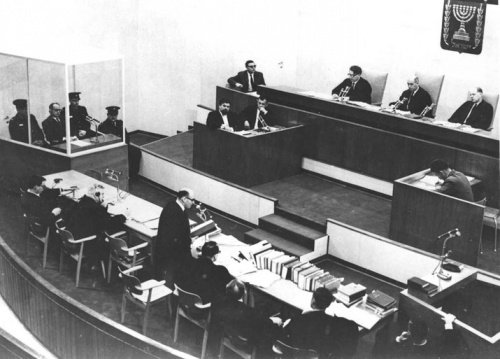
Court room with Eichmann in the glass booth, 1961
CONCEPT
50 years after the Eichmann trial in Israel took place, the full compendium of more than 400 hours of film footage documenting the trial were released earlier this year on Youtube. In 1961, former SS officer and highest figure in the Nazi hierarchy responsible for facilitating the extermination of European Jewry, was charged and tried with committing crimes against the Jewish people and humanity. The case of multiple controversies was the first telecast of actual courtroom proceedings and was from the beginning conceptualized as a symbolic performance with a special stage design which placed the accused in a bullet-proof glass booth, a film director that made deliberate cinematographic decisions and an international audience that witnessed the trial from the living room. Originally shown as daily newsreels on international television, the trial was performed as a morality play, not surprisingly ending with the death sentence of the accused, which until today remains the only civil execution ever carried out in Israel.
In the installation "The Man in the Glass Box (1961–2011)", the aesthetic and narrative strategies of the trial are made transparent. The proceedings are performed as an audio and video drama in three acts: the appeal, the testimony, and the verdict. From the ceiling 6 headphones are hanging, all sliced in half, of which each presents a disembodied voice of one persona in the proceedings: the accused, the judge, the prosecutor, the defender, a witness, and a political journalist. All voices contribute to the trial from their own perspective, however, only disclose a fraction of the story.
The audio is expanded by a three channel video projection, which likewise disassembles the original film footage. As a result of the required simultaneous translations of the original proceedings from Hebrew (and partly German) into English, French and German, a large part of the footage is showing the silent protagonists of the trial, while a translator – mostly a female voice – is talking for all of them as a voice-over. The artist re-enacts the trial by recreating the silent film scenes of the footage all by herself and is lending her voice to the translator who presents all characters of the play. Thus she is re-narrating the story for the visitors, who can combine the stories, change perspectives and play an active role in the perception of the trial and politics of remembrance.
ACTS
The Appeal
The Testimony
The Verdict
CHARACTERS
The Accused (Eichmann)
The Judge
The Prosecutor
The Defender
A Witness
A Political Journalist
INSTALLATION
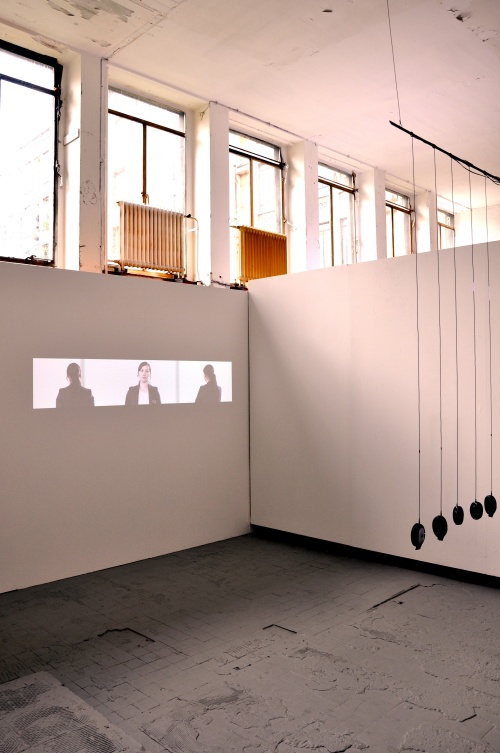
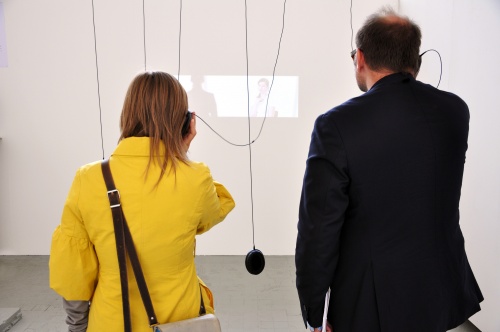
Installation set-up with beamer and headphones
WALL (width): 3 m
PROJECTION (width): 2 m
HEADPHONES (width): 1.5 m
PART #1 : Audio
EICHMANN (line out 3) | DEFENSE (line out 4) | JUDJE (line out 1) | PROSECUTION (line out 2) | WITTNESS (line out 5) | ARENDT (line out 6)
PART #2 : Projection
TECHNICAL SET-UP
SOUND
OK | 1 x mac mini (same for video) > BELONGS TO PZI
OK | 1 x TerraTec Phase 26 (incl. USB cable) > BELONGS TO AYMERIC
OK | 2 x two RCA plugs to 3.5 mm stereo plug > BELONGS TO PZI
OK | 2 x 3.5 mm stereo plug to 6.35 mm stereo plug (1/4" TRS) > BELONGS TO PZI
OK | 2 x Behringer Microamp HA 400 Headphone Amplifier > BELONG TO PZI
OK | 3 x stereo headphones 3m cable and 6.35 mm stereo plug > 1 BELONGS TO NATASA (incl. 1/4" TRS) , 1 TO DANNY (incl. 1/4" TRS), 1 TO PZI (incl. 1/4" TRS)
OK | 1 x power distributor for 4 plugs > BELONGS TO PZI
OK | 1 x 150 cm iron rod with 8 holes > BELONGS TO NATASA
IMAGE
OK | 1 x mac mini (same for audio) > BELONGS TO PZI
OK | 1 x HD beamer Hitachi CPWX3011N 1280 x 800 px (16:10) > BELONGS TO PZI
MISSING | remote control for beamer > BELONGS TO PZI
OK | 1 x DVI cable for beamer > BELONGS TO PZI
OK | 1 x beamer mount > RENTAL
GENERAL
OK | mdf plate
OK | steel wire
OK | steel clips
OK | hooks and anchors
extension cable
OK | power distributor
OK | cable strap
OK | gaffer tape
SET-UP INSTRUCTIONS
switch on beamer (resolution 1280 x 800 with 16:10 ratio)
switch on mac mini (should reboot daily by itself)
startup script should start video loop
startup script should satrt audio loop
SCRIPTING
Controlling jack with qjackctl
Running 6 channel mono wav-files with BASH
termianl:~$ ./filename.sh
#!/bin/sh
startjack ()
{
/usr/bin/jackd -dalsa -dhw:1 -r44100 -p1024 -n2 -o6 &
}
playback ()
{
ecasound \
-a:1 -i 1.wav \
-a:2 -i 2.wav -chmove:1,2 \
-a:3 -i 3.wav -chmove:1,3 \
-a:4 -i 1.wav -chmove:1,4 \
-a:5 -i 2.wav -chmove:1,5 \
-a:6 -i 3.wav -chmove:1,6 \
-a:1,2,3,4,5,6 -f:s16,6 -o jack,system
}
while true
do
if pidof jackd
then
playback
else
startjack
fi
done
PROJECT NOTES
Key Words
Leiden mit Leidenschaftlosigkeit versprachlichen
Bilderverbot – kein Bild vom Grauen möglich
Unüberschaubarkeit des Materials
Paradoxon des Zeugens
Creation of Memory
Collective Heardbeat
Erinnerung abspielen
Verfremdungseffekt
Video Samples
Dismissed Ideas
Repeatingly reading the testimony of Aveva Fleischmann and running until I can't go on
Same story repeats / doubles / tripples until it gets diffuse and incomprehensible
One voice for all protagonists of the trial (protocolls) > translations > who's speaking? > a story of millions
Telephone (children's play) / Stille Post > memories get difuse, change of certain details
Video gets interrupted by real-estate commercials (like original in 1961)
Image ban > empty (white) tv screens as space for imagination
Nested loops (story within a story) Natasa / Norma Rose / Hanna Arendt / Aveva Fleischmann
LINKS
Youtube Channel - The Eichmann Trial
Transcripts of the Eichmann Trial
Ecasound Documentation
Vim Documentation



